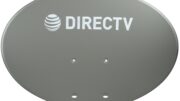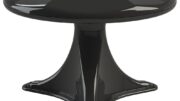This is an exciting time for free television. There are more programs than ever before, and even more content is coming. The next generation of television services, called ATSC 3.0, will bring free TV a lot closer to the streaming experience and may even give you the best possible 4K quality, all without monthly fees.
ATSC 3.0 could be six or more years away, but that doesn’t mean the world of television antennas is standing still. For the last several years, the FCC and local broadcasters have hatched a complex plan. It’s known as “the repack.”
What is “the repack?”
The science of television broadcasting has changed a lot since the 1930s when the original channel plans were launched. Back then, it was practically impossible to keep good control over a broadcast signal. Confusing rules were put in place to make sure that one signal didn’t overlap another. It boils down to this: Every channel needed an empty channel to the left and right of it. There were a few exceptions such as channels 4-5, 6-7, and 13-14. There is a built-in gap where those channels are so that an additional gap isn’t needed.
It seems simple enough but especially in the crowded Northeast, it became a hellacious jigsaw puzzle. Channels in New York City had to make sure that they didn’t interfere with Philadelphia, Hartford, and upstate NY. In some cases even further markets like Baltimore and Providence were affected. Then, all those other markets had to make sure they didn’t interfere with even further markets! It meant that even though there were up to 82 slots for local broadcasting at one point, no city could really have more than 15-20 stations without risking an overlap.
Where we are today
That all changed with the coming of digital broadcasting. 21st-century broadcast equipment could be a lot more precise, and those “white spaces” weren’t needed anymore. Slowly, the broadcast landscape began to shrink. You may have noticed in your youth that channels in the 70s and 80s were taken away from TV. In 2009, channels 51-69 were taken away too. The resulting frequencies were given to first responders and then to cell phone companies. The frequencies used by television also work very well for other sorts of local radio, and that includes cell phones.
Finally by 2017 the FCC and local broadcasters agreed to a plan that would have all TV broadcasting limited to channels 2-36. In practically every case that’s enough for over 100 program streams, since digital broadcasting allows for more than one stream per broadcast channel. The resulting frequencies will be given up to cell phone companies so that you can get blazing fast 5G data.
So, getting back to the question…
In most markets, almost all broadcasting will take place on channels 14-36, from 475-610MHz. Some markets will still have broadcasts on channels 7-13, with very few using channels 2-6. Those lower channel numbers require a much larger antenna, and consumers don’t like that. However, they take less power to broadcast and station owners like that. So it’s a bit of a tug of war.
If you’re looking for a TV antenna and you don’t know what’s in your area, you should definitely fill out a free antenna request form and let the experts figure out what antenna works best in your area. There’s no obligation and every request is reviewed by certified antenna professionals, not just run through a web page.
If you’re a little more comfortable with the process and you know what frequencies are used in your areas, you can browse our antenna selection at Solid Signal to find the antenna you need. In most cases you want to look for an antenna with strong performance in the 475-610MHz range because that’s where most of your channels, if not all, are going to be within two years.





